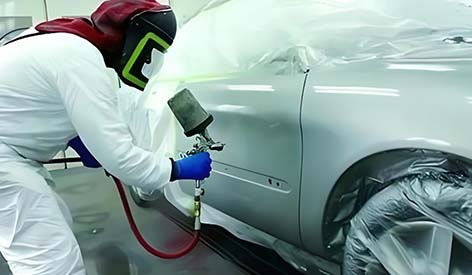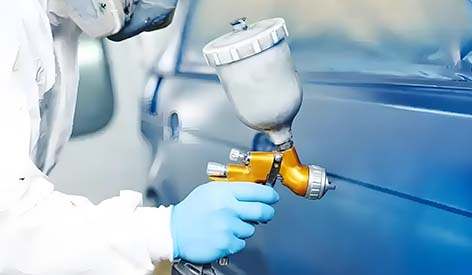ㆍPrivacy: We respect your privacy. Here you can find an example of a non-disclosure agreement. By submitting this form, you agree to our terms & conditions and privacy policy.
Views: 13 Author: Site Editor Publish Time: 2025-06-23 Origin: Site








Painting a car requires careful planning, precise measurements, and quality materials. Whether you're performing a full repaint or touching up specific areas, understanding how much paint you'll need is crucial for achieving professional results. This article explores the factors that determine paint quantity while briefly examining spray painting metal surfaces and automotive paint systems.
content:
The amount of paint required to paint a car depends on several variables:
Vehicle Size: Compact cars need 1-1.5 gallons (3.8-5.7 liters), while SUVs or trucks may require 2-2.5 gallons (7.6-9.5 liters).
Paint Type: Basecoat/clearcoat systems use less base color but require additional clear coat. Single-stage paints demand more volume.
Number of Coats: Most jobs require 2-3 coats for full coverage.
Paint Application Method: HVLP spray guns are more efficient than conventional sprayers.
Surface Preparation: Bare metal needs primer, increasing material usage.
A general rule is that one gallon of paint covers approximately 350-400 square feet when properly applied. Since an average sedan has about 100-120 square feet of paintable surface, a full repaint typically consumes 1.5-2 quarts of basecoat and an equal amount of clear coat.

Spray painting metal surfaces requires proper technique to prevent runs and uneven coverage. Light, overlapping passes ensure consistent results, with multiple thin coats being preferable to one heavy application. For automotive metal, self-etching primers improve adhesion, while high-build primers help smooth imperfections. When using rattle cans for small repairs, shake the can thoroughly and maintain a consistent 8-10 inch distance from the surface. Allow proper flash-off time between coats to prevent solvent entrapment, which can lead to bubbling or peeling.
Modern automotive paints consist of sophisticated chemical formulations designed for durability and aesthetics. Waterborne basecoats have largely replaced solvent-based systems in professional shops due to environmental regulations. These paints require precise mixing ratios and application temperatures for optimal performance. Ceramic clear coats offer superior UV protection and gloss retention compared to traditional urethane clears. For DIY enthusiasts, single-stage urethane paints provide a simpler application process but lack the depth of multi-layer systems. Always consult the paint manufacturer's technical data sheets for coverage rates and drying times specific to your product.
Color Change: Switching from dark to light colors (or vice versa) may require extra sealer coats.
Overspray Loss: Approximately 20-30% of sprayed paint doesn't adhere to the surface.
Gun Efficiency: High-volume low-pressure (HVLP) guns transfer 65-70% of paint to the surface, reducing waste.
Panel Complexity: Curved surfaces and intricate body lines consume more paint than flat panels.
Professional painters often mix 10-15% more paint than calculated to account for test sprays, gun cleaning, and potential rework. Keeping detailed records of paint usage per vehicle helps refine estimates for future projects.

Determining how much paint to paint a car involves careful assessment of vehicle dimensions, paint system selection, and application methodology. While spray painting metal follows similar fundamental principles, automotive finishes demand greater precision and material quality. By understanding these variables and accounting for real-world application factors, both professionals and skilled DIYers can achieve showroom-quality results while minimizing material waste. Always conduct test sprays on scrap panels to verify color match and application technique before committing to the final paint job.
content is empty!

